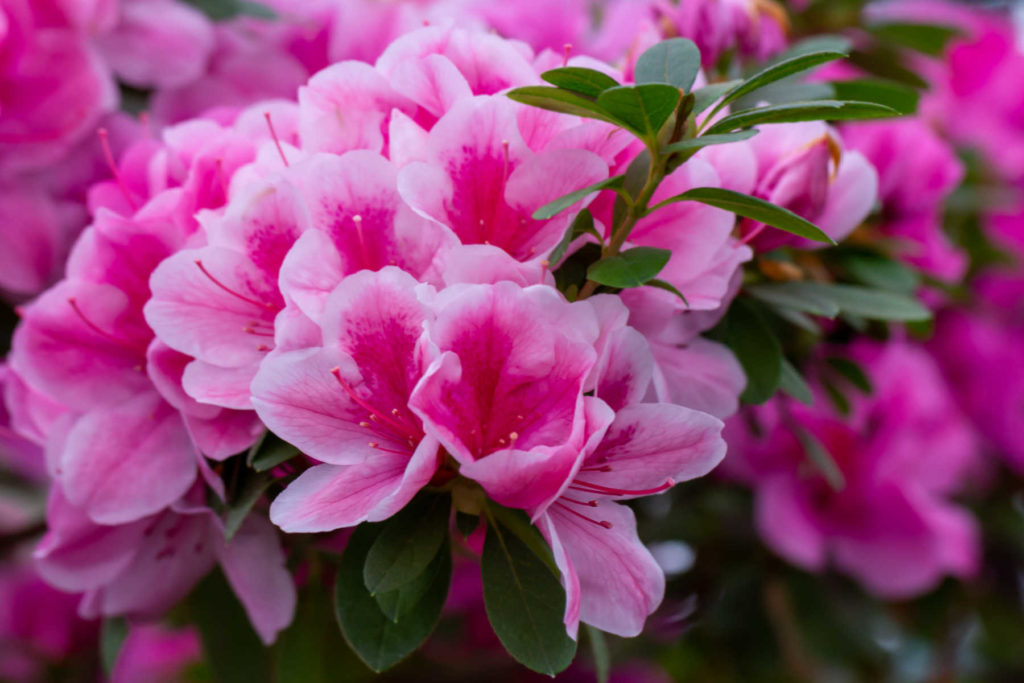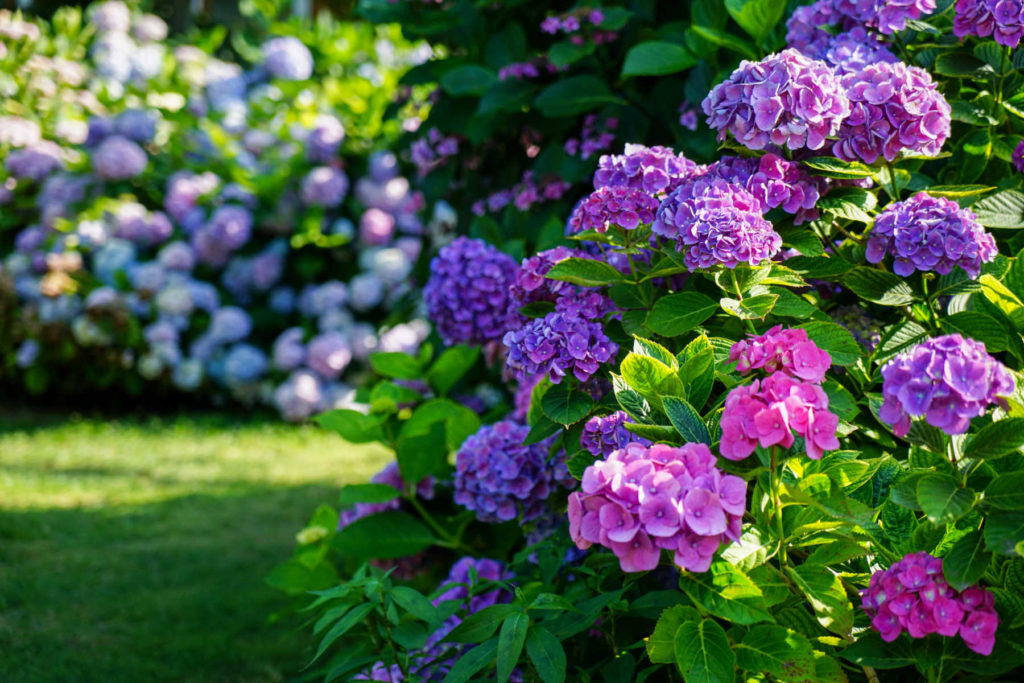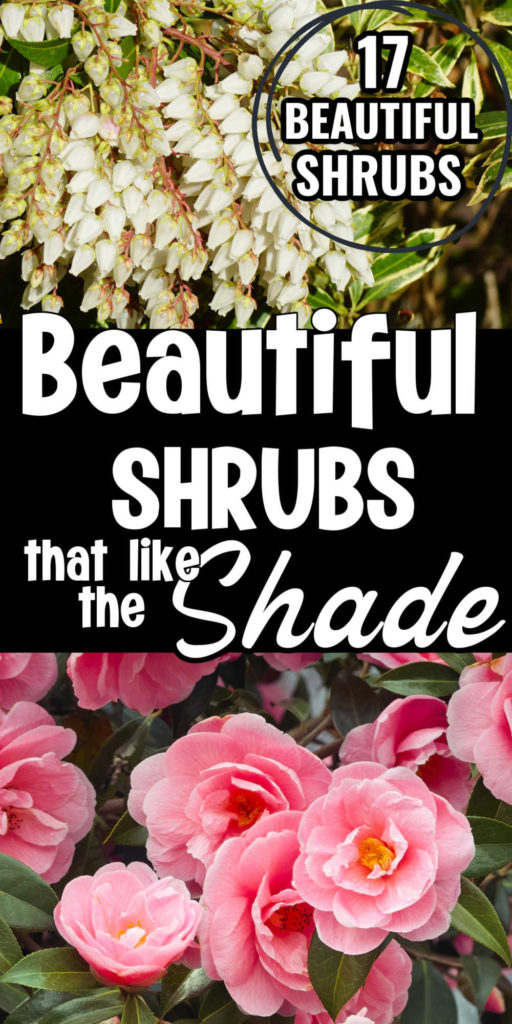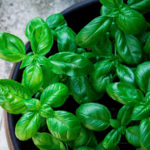15 Amazing shrubs for shade that do well planted under trees

If you ask garden owners if they are excited for the upcoming spring and the chance to redecorate their gardens, they will all confirm that they can’t wait to bring the colors back to their beloved gardens.
But, they will also agree that there is one area in their garden that always gives them trouble when landscaping – in shady garden areas under trees!
And for good reason, this area rarely receives enough morning sun, the canopy of the tree further prevents rainfall from reaching the ground, not to mention that the plants you place there need to compete with the roots of the trees for water and nutrients.
Therefore, you need to create a unique, adequate strategy with appropriate shade-loving shrubs and plants which will work harmoniously with your trees and create an attractive shady landscape in your garden or lawn.
If you are looking forward to planning your new shade garden or simply readjusting and changing what you currently have under your trees, but you have no idea which shrubs will do well planted under the trees, don’t worry, we got you covered!
Here is a list of 15 amazing, shade-loving shrubs that will do well planted under trees.
Table of Contents
Best Shrubs for Shade
Mountain Laurel Shrub

Mountain laurel is a gorgeous shrub that sports glossy evergreen leaves and showy clusters of flowers that bloom in late spring.
The flowers have unusual, geometrical shapes, and before blooming they look like tiny stars in a pastel-pink color.
This shrub prefers part-shade and thrives in a cool, rich, acidic soil that is moist but also well-draining.
If you think your soil is not acidic enough, we suggest that you use an acid-enriched fertilizer that will help your mountain laurel bush thrive and bloom!
Japanese Rose Shrub

Incredibly beautiful with rich, vibrant yellow flowers, this deciduous shrub will bring warmth, charm, and life to your garden.
It is considered one of the most shade-tolerant shrubs that can survive deep shade. And you do not have to worry about them surviving winter – if they are overgrown, just cut them all the way back to the ground in fall, and in spring, they will return in their full glory!
Another great thing about them is that they are not so picky about their soil either – they just require loamy soil!
Rhododendrons shrubs

Rhododendrons are one of the loveliest, most beautiful bushes that bloom in various brilliant shades.
Whites, pink, yellow, purple, red, the choice is really up to you!
These blooming shrubs can actually grow in size quite a bit, so they will require regular trimming.
Additionally, you should know that they require heavily acidic soil, so if yours is not acidic enough, you should consider using acid-enhanced fertilizers in early spring to give your rhododendrons a chance to grow strong and thrive!
Be aware! The leaves of rhododendrons are poisonous to animals, so do not have them in your garden if your pet also lives there!
California Sweetshrub

Are you looking for a low-maintenance shrub with unique lovely flowers?
Then California Sweetshrub is the one you were looking for!
This gorgeous shrub which has deep red flowers produces a pleasant fragrance, which according to many gardeners resembles the fragrance of red wine.
Moreover, if you live in an area where deer frequently “redecorate” your gardens, you will especially love the California Sweetshrub as deer are not fans of it, and avoid it!
Just remember to use moist soil and water it frequently as this shrub does not tolerate drought!
Yew shrubs

Do you ever catch yourself staring at the background of a lovely Christmas movie wondering what are those lovely bushes that look so vividly green and beautiful in Christmas arrangements?
Probably Yews!
Yews shrubs are needled and evergreen and they are highly adaptable, and tough, working in both sun, partial shade, and full shade equally well which is one of the reasons why they are so popular.
Another reason why they are beloved is that they are not needy, and all they want is well-draining soil, and a little trim in early summer to keep their lovely shade.
Be aware! Yews are toxic plants, so you should not have them if you live with children or pets who frequently play in your garden and around your yews.
Azaleas shrubs

Azaleas shrubs give gardens that fairytale-like vibes with their bright, glowing, radiant colorful azalea flowers!
They come in many shapes and sizes, not to mention in various colors. No wonder they are so popular!
There are many variations of these shrubs, including dwarf ones.
These shrubs do well in partial shade, and will stretch towards the sunlight forming a more graceful habitat.
But keep in mind that like other shrubs which are subspecies of the rhododendron family, they also require moist, acidic soil, (Ph between 4.4 and 6.0) so make sure that you provide these conditions to your new Azaleas.
Boxwood (Buxus) shrubs

Dreamy, popular, and quite common, Boxwood also known as Buxus, are another shade-loving shrub worth considering!
They are easy to grow and super adjustable – you can easily reshape them in the format you like, be it clipped hedges or balls for the more formal gardens.
They do not bloom, only foliage.
When it comes to their soil, they are not really picky, although they prefer the sandy loam soil.
Like other ornamental shrubs and plants, Boxwood also requires the soil to be well-drained as constantly wet soil may cause the root to rot.
Hydrangea shrubs

Hydrangeas come in over 70 species.
Most commonly grown as shrubs, they prefer partial shade and only like morning sun; too much sun, especially direct and hot will not work well with these beauties!
They come in countless shades, and if you are looking to add some color, they are the right choice for you!
Most of them thrive in fertile, well-draining soils with plenty of moisture. Make sure you add compost to enrich your soil before planting them!
Red-Twig Dogwood Shrub

Another deciduous flowering shrub, the red-twig dogwood shrub also known as Tatarian dogwood is an incredibly pretty and interesting shrub whose fall foliage looks magical when it starts to pick up hints of rose and gold only to reveal the attractive red bark in winter.
In summer, there are small clusters of fragrant white flowers, which turn into bluish-white berries later in autumn. These tend to attract birds.
These shrubs also prefer partial shade, and fertile, moist soil, which is also slightly acidic (5.5 to 6.6 Ph).
Pieris Japonica

Pieris Japonica is a slow-growing evergreen shrub that is compact, rounded, and has gorgeous white flowers which come out in early spring.
The leaves start out a red color, slowly changing to pink, cream, and then become lime green.
Even though it looks perfect for growing under trees or as a shrub border, you should know that this shrub is a bit needy; it requires acidic, heavily moist, well-drained, sandy soil.
You should also be aware that Pieris Japonica is known for attracting bees and tiny insects.
Be aware! Pieris Japonica bushes can be toxic to cats and dogs!
Japanese Tree Peony shrub

Yes, the name says tree, but the tree peony is actually a deciduous, flowering shrub that loves shades – making it the ideal candidate for our list and your garden!
The Japanese Tree Peonies are not like their sun loving cousins the perennial peonies – these actually prefer the dappled shade under the trees.
Also, on the list of things they like and prefer, they like acidic to neutral soils.
They may look delicate, but they are actually quite tough – they are low maintenance and just want regular watering and mulching. And in return, you get to enjoy their stunning, huge, ruffled flowers in the middle of spring!
Camellia shrubs

One of our favorite flowering shrubs, Camellias are simply elegant, delicate, and beautiful shrubs that will add a note of elegance to your garden.
Camellia blooms are simply stunning!
Depending on the variety you have chosen, the camellia shrub will blossom either in fall, winter or spring, basically any time between October and April.
This shrub requires acid or ericaceous soil (5.5-6.5 Ph), so make sure you add acid fertilizer to make the soil slightly acidic.
The good news is, once you plant them, then you need to do very little to maintain them, just occasional watering.
Spotted Laurel

Spotted Laurel is an incredibly stunning, colorful shrub which you need in your garden if you are a fan of beautiful foliage, and let’s be honest, who isn’t?
They have broad evergreen leaves and produce clusters of maroon flowers in spring.
These flowers turn into bright red berries later on, but only if both male and female versions are planted together. How awesome is that?
When it comes to requirements, Spotted Laurel requires moist but well-drained soil and grows well in loamy, sandy soil.
They do not need a lot of sun, in fact, they thrive best when they are placed in the shaded areas of the gardens.
American Witch Hazel

Everything about this bush is unique and mysterious, from the catchy name it has -American Witch Hazel to the clusters of citrus-scented yellow flowers it blooms in late fall and early winter.
The American Witch Hazel is a large deciduous shrub, which is native to North America, as the name suggests.
If you plan on keeping it smaller to fit under your trees, you need to prune it regularly.
Keep in mind that the pruning should be done before summer starts to avoid potentially cutting off the buds.
It is relatively low maintenance, tolerating a variety of moisture conditions once established.
As for its soil preference, it requires fee-draining soil, which is light and with plenty of organic matter. It grows best in acidic, loamy, moist, rich, sandy, silty loam, and well-drained soils.
Ninebark shrub

The ninebark shrub is a favorite shrub of cold climate gardeners due to its extreme toughness, reliability, and hardiness.
Ninebark shrubs got their names from the exfoliating bark that peels in layers when the plant is mature. Additionally, they have colorful, stunning foliage which emerges mid-spring but continues to last well into fall.
They have beautiful, tiny flowers arranged in mini “bouquets-like” shapes. Really cute!
As for the soil preference of ninebark, this shrub prefers moderately moist, well-draining soil whose pH is neutral to slightly acidic.
Once established, you do not have to worry about it as they can tolerate a wide variety of conditions.
Daphne odora

Daphne is one of my most favorite plants. I love how it’s one of the first plants to bloom in the spring and the flowers are so fragrant.
It blooms with balls of tiny white and pink fragrant flowers and depending on the variety the foliage can be a dark green or variegated.
If you are trying to find a shrub that does well in shade, daphne is a great choice, especially if the location gets a bit of sun as well.
If it is only in shade, you’ll find that the flowers won’t bloom, but you still get the beauty of the leaves.
Clethra

Clethra is an ornamental shrub that does well in partial shade.
This bush has large clusters of fragrant spiky flowers about 6″ tall from about mid-summer to fall.
Decorating under tree areas can be tricky but not impossible. A good plan which includes appropriate shrubs will help you transform your garden into a magical oasis where every single square is covered in lovely plants, shrubs, and trees.
So, let’s brighten up and enrich your garden with some beautiful, shade-loving shrubs!




